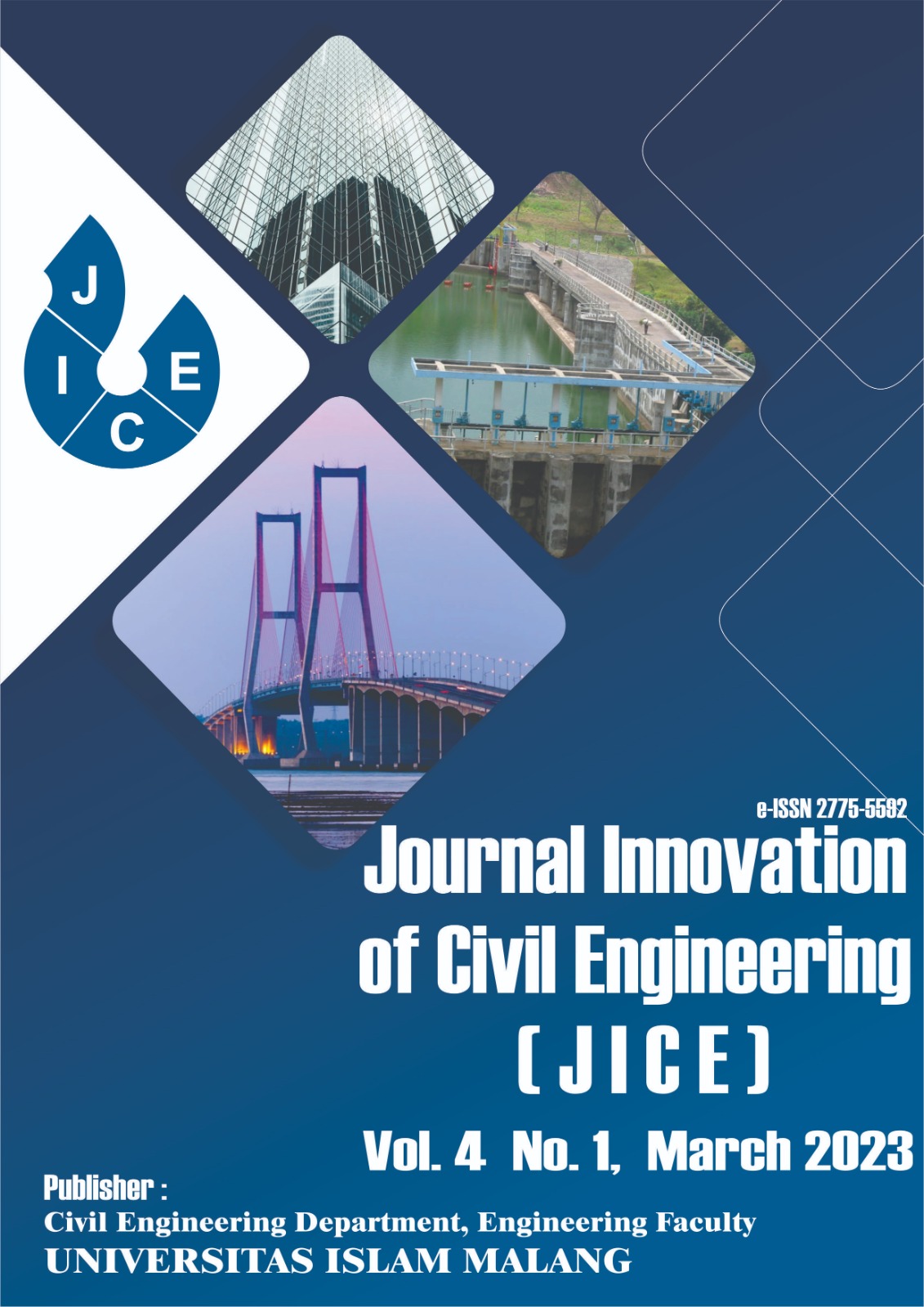OPTIMIZATION OF WATER RESOURCES UTILIZATION DISTRIBUTION FOR AGRICULTURAL BENEFITS IN THE CLAMPIS IRRIGATION AREA SAMPANG DISTRICT
DOI:
https://doi.org/10.33474/jice.v4i1.19572Abstract
Utilization of water resources and management is an important factor and has a decisive role in order to increase production per plant in general and crop production in particular. In order to maintain self-sufficiency in food, it is necessary to make efforts to continuously increase the intensity of potential food crops. These efforts include optimizing the proper distribution of water utilization. Factors to determine the need for irrigation water include land preparation, consumptive use, percolation and seepage, replacement of water layers, and effective rainfall. While the method used in this study is optimization using a linear program using the Solver facility in Microsoft Excel with the aim of optimizing the availability of irrigation water so as to produce maximum profits and distribution of irrigation utilization that is more effective and efficient. From the optimization results using the Solver and Microsoft Excel tools, it can be seen that the maximum area of land that can be planted with the available inflow at the intake for MTI (Rice I 2086 Ha/Tobacco II 667.54 Ha), MT-II (Rice I 667, 54 Ha/Tobacco I 1391 Ha/PolowijoI 567.35 Ha/Rice II 128.11 Ha), MT III (Polowijo I 323.65 Ha/Rice II 348.89 Ha/Tobacco II 1261.46 Ha/Polowijo II 825, 00) and provides an analysis of the maximum profit of agricultural products of Rp. 178,183,800,000.00,-.
Keywords: Linear Program Optimization; Utilization of Water Resources; Agricultural Benefits; Klampis Irrigation.
Downloads
Published
How to Cite
Issue
Section
License
Copyright (c) 2023 Fairus Zabadi

This work is licensed under a Creative Commons Attribution-ShareAlike 4.0 International License.
Journal Innovation of Civil Engineering (JICE) with registration number ISSN 2775-5592 (online) published by Universitas Islam Malang by applying for copyright and License.
Copyright:
- Copyright in each text is the property of the author.
- The author agrees that JICE has the right to the first license issued with a Creative Commons Attributions-ShareAlike 4.0 International License.
- The author can write the article separately through non-exclusive distribution with other versions related to the first published article in the Journal Innovation of Civil Engineering (JICE).
License:
- Attribution: You must give appropriate credit, provide a link to the license, and indicate if changes were made. You may do so in any reasonable manner, but not in any way that suggests the licensor endorses you or your use.
- ShareAlike: If you remix, transform, or build upon the material, you must distribute your contributions under the same license as the original.
- No additional restrictions: You may not apply legal terms or technological measures that legally restrict others from doing anything the license permits.
You are free to:
- Share a copy and redistribute this material in any form or format.
- Change and make derivatives of this material for any purpose, including commercial interests.
The licensor cannot revoke the above conditions as long as the authors comply with the terms of this license.




